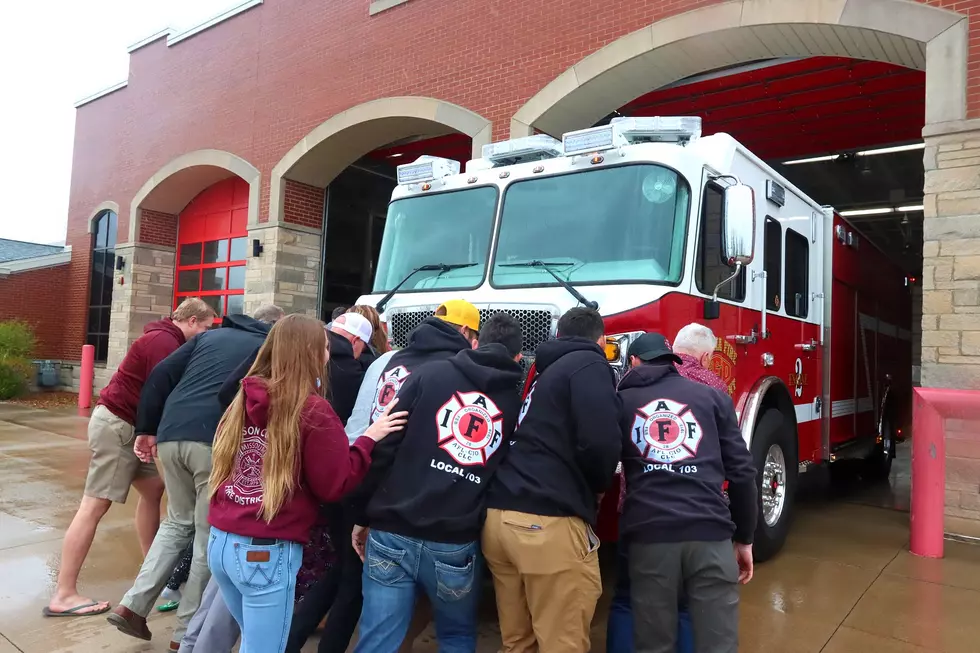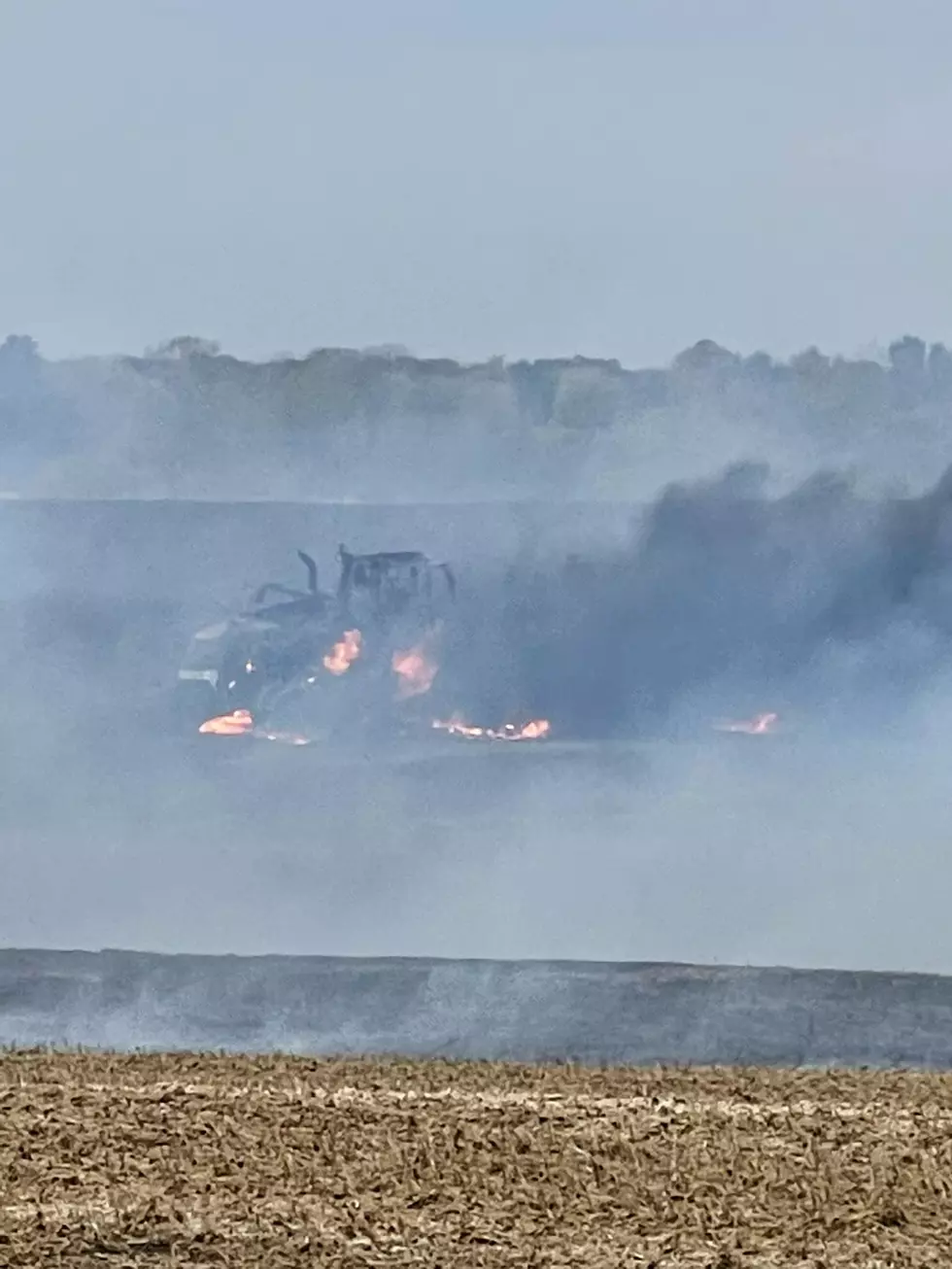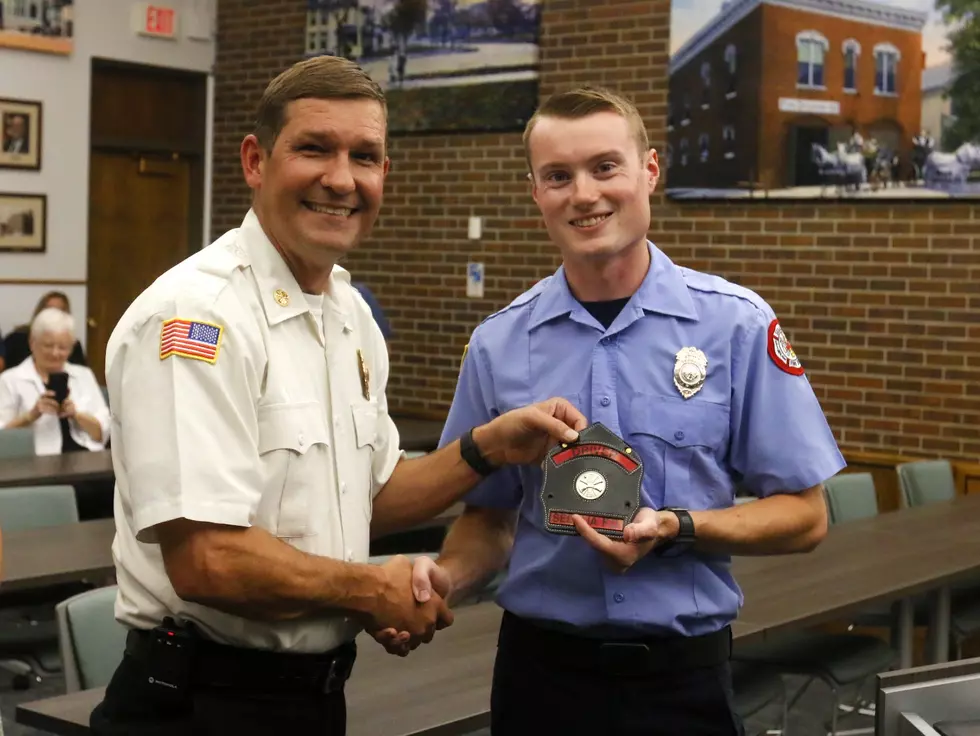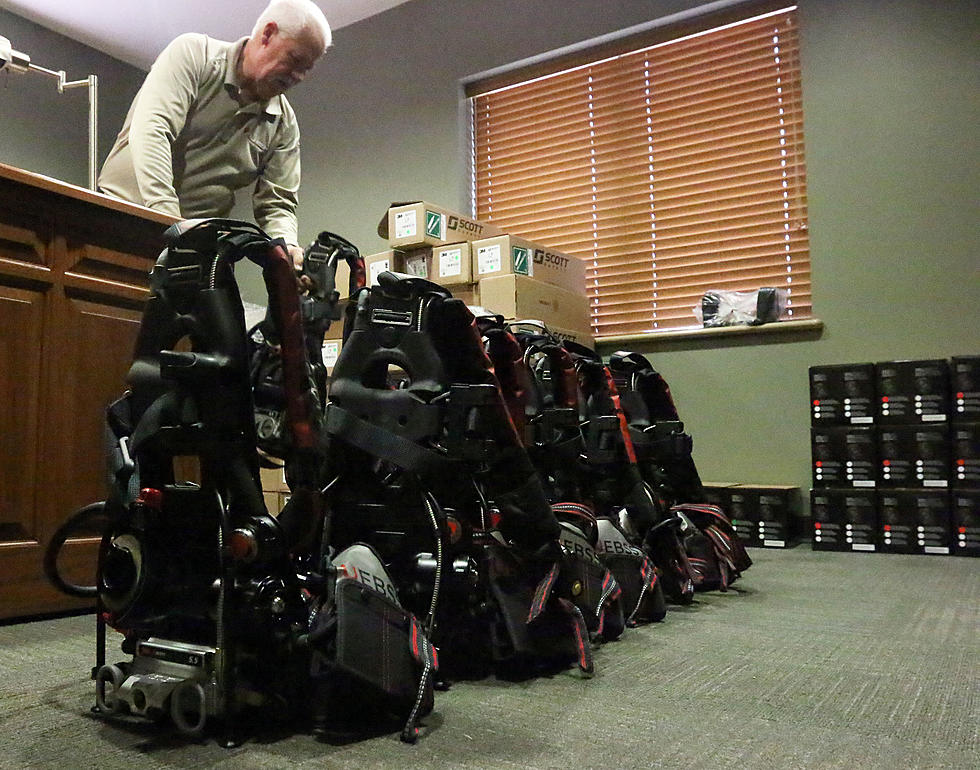
SFD’s ‘Push-in’ Ceremony A Long-Standing Tradition
A push-in ceremony was held Monday at the Sedalia Fire Headquarters, 2606 W. 16th Street, to show off the City's new fire engine to the public.
The custom-built engine cost over $700,000 and weighs 51,000 pounds.
Over a dozen people, including city officials, firefighters and taxpayers helped push the fire truck backwards into its bay at 2 p.m. in the rain (with a qualified SFD driver at the wheel of course).
Those attending the ceremony got to inspect the new Engine #2 up close, tale photos and ask questions of Chief Matt Irwin and Deputy Chief Daniel Shaw.
Chief Irwin explained that the push-in tradition began in the 1800s, when horse-drawn fire trucks returned to the station after a call and unhitched their horses, and the apparatus had to be manually pushed back into the fire station (presuming there was no drive-through capability from the rear of the building).
Irwin said that it is important for taxpayers to see what they bought, and be able to examine up close the equipment that Sedalia firefighters use every day in their job.
“Today as a community, we will honor the traditions of past histories by pushing this fire truck in,” Chief Irwin told those gathered in the bay, adding that the engine would be placed in reverse to make the process a little bit easier.
The ceremony was “super fantastic” for Sedalia Mayor Pro Tem Rhiannon Foster, who represented the Sedalia Council Monday.
This was Foster's first “push-in” ceremony and she gladly participated in the rain, along with over a dozen people.
“I'm so excited, I always love driving by, because I think the fire station is so beautiful, with the red trucks and the big doors and the glass, it's gorgeous. I'm excited that we could be here and be a part of it,” Foster said.
The new truck is totally worth the cost, Foster noted, and will save many lives over the course of the apparatus' lifetime, which is estimated to be 25 years.
Deputy Chief Daniel Shaw noted that the new truck and hoses will allow firefighters to go from using 148 PSI to 105 PSI, which reduces the stress, and wear & tear on the water pump as well as the engine on the truck, but with better results at the nozzle, which goes from 125 gallons per minute through an inch and ¾ hose line to 160 gallons per minute.
“So the truck doesn't have to run as hard, as fast and as long (when fighting a fire),” Chief Irwin explained.
All Sedalia fire trucks will eventually switch over to the new system, he added. Hose pressure testing was done throughout last week, the chief said, with five brand new sections producing leaks at the couplers. The five bad ones were picked up by the manufacturer on Monday and will be replaced with new ones.
Testing a hose involves kinking it on purpose to see if and where it leaks.
“It's impressive and we're super happy to have it,” Deputy Chief Shaw commented on the new hose system.
Irwin added that the lower water pressure reduces the to risk to firefighters inside a burning building. “We will be able to operate more hose lines with less people on each hose. That, in theory, will allow us to operate more hose lines as a group,” Chief Irwin said.

The fire chief added that the new truck has both red and blue lights, noting that people tend to see red lights better during the daytime and they see blue lights better at night.
So when emergency lights are activated on the truck, you will see red and blue lights alternating, making the apparatus more visible, whether it's day or night.
In addition, a vertical row of lights displayed on the truck lets the incident commander and truck operator how much water is left in the tank. Green means full, blue means three-quarters, yellow means half full and red means a quarter tank or less, Chief Irwin explained.
The truck carries a total of 750 gallons of water, Deputy Chief Shaw added, noting that once the level reaches the halfway point, “we should be hooking up to a hydrant.”
At 15 years of age, the Spartan truck will go into reserve status and be used for an additional 10 years for a total of 25 years of useful life, Chief Irwin told KSIS.
SFD Push-in ceremony
Gallery Credit: Randy Kirby
LOOK: 20 Outside-the-Box Uses for Vacant Big-Box Stores
Gallery Credit: Stephen Lenz
More From AM 1050 KSIS









